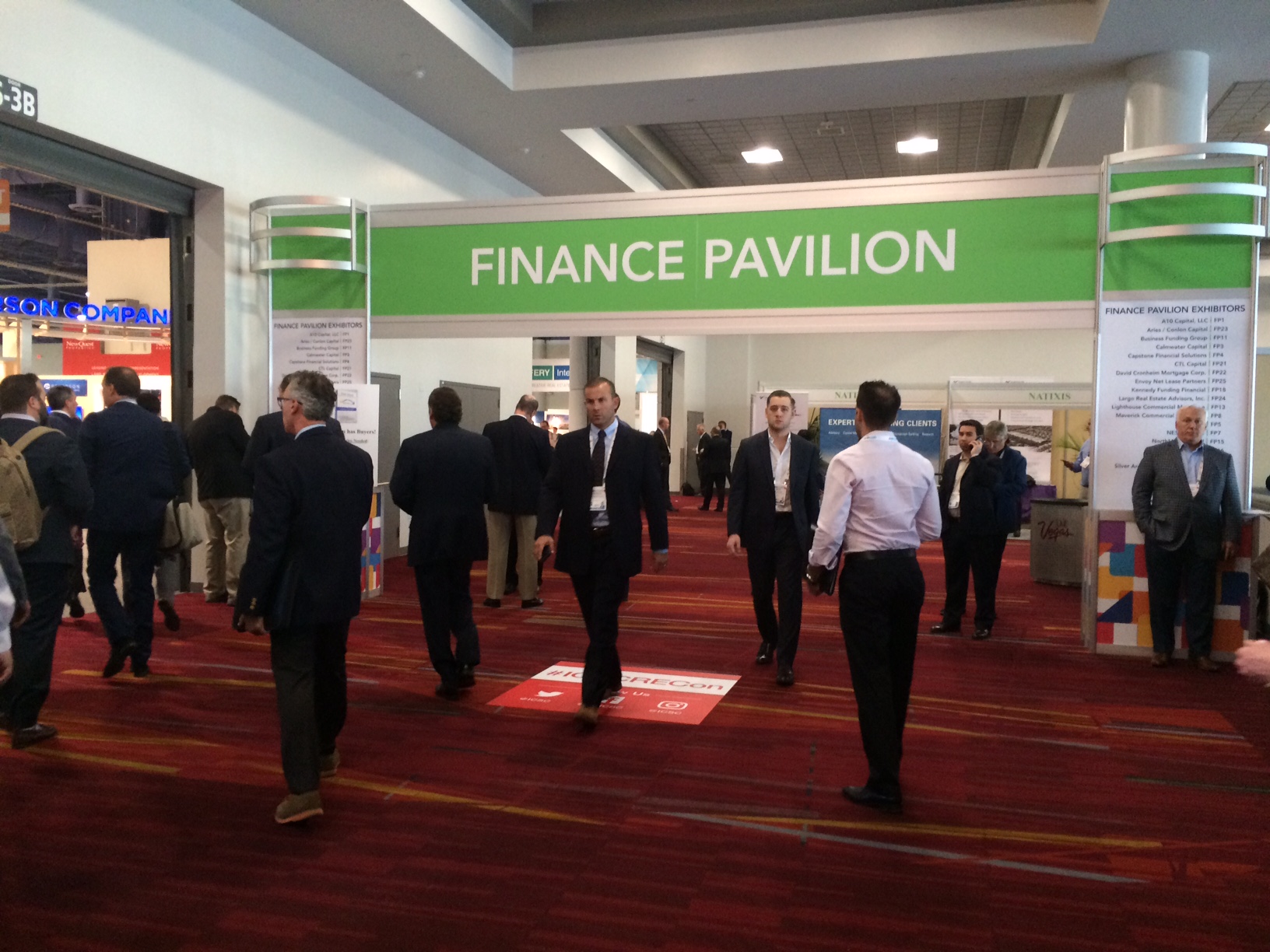While most of the buzz on the show floor this year has been around the upheaval in the regional mall space and the slowdown in the investment sales market, the overall mood remained positive. The story many industry insiders went with was that this is a time of opportunity to resolve challenges and make their centers stronger.
Here are takeaways from day two of the conference.
- Expect retail rents to drop in the next year or two, said Michael Weiner, president of Excess Space Retail Services, a surplus real estate disposition and lease restructuring firm. “Rents going down on Madison and Fifth [in New York City] is maybe a sign of what’s to come,” Weiner said. Nevertheless, he pointed out that the fact that retail center owners are willing to admit the challenges in the marketplace and deal with them now is a positive development. “I think we’ll have a softer landing than maybe what some people have in their minds,” Weiner added.
- The contraction in the retail sector will continue for some time, agreed Katie A. Reinsmidt, executive vice president and chief investment officer with regional mall REIT CBL & Associates Properties. There are more tenants out there that landlords have concerns about, she said. Yet Reinsmidt added that this may be an opportunity to replace struggling retailers with stronger, more experiential users, including movie theaters and restaurants. “Today our portfolio is better positioned than ever and our balance sheet is better than it’s ever been,” she noted.
- The bottom line is that this is clearly a tenant’s market, with landlords resigning themselves to low or zero rent growth on renewals for leases signed at the peak of the previous market and meeting tenants halfway on reassignment and subletting provisions, according to multiple brokers and developers. In 2007, landlords wanted their space back if a tenant had to leave, according to Michael N. Hirschfeld, co-lead of the national retail tenant services group with JLL. “I haven’t had a landlord in the past six months who was willing to take a firm stand on [space] recapture,” Hirschfeld noted. Meanwhile, John McNellis, co-founder of development firm McNellis Partners, told an audience at a Marcus & Millichap presentation on Monday night that he was happy to make deals with tenants at the same rents as 20 years ago, on a non-inflation-adjusted basis. That in spite of the fact that his projects are located in the Greater Bay Area, one of the stronger markets in the country.
- Lenders are still willing to finance acquisitions of retail properties, but they may be more conservative than borrowers would like, noted Ryan Imbrie, managing director and retail product council chair with brokerage firm SVN. In addition to looking closely at the borrower profile, most lenders are asking for 25 to 30 percent in equity commitment, with some risk-averse local lenders requiring as much as 40 percent in equity.
- Investors looking for retail acquisitions are being careful. Imbrie pointed to a client that recently bought a strip center in an urban market in Washington State. The client had until now focused exclusively on retail assets, primarily in the suburbs. The firm is now trying to diversify its portfolio both by location, going after properties in urban cores, and by asset type, seeking exposure to mixed-use, multifamily and office components. “There are value-add buyers who are opportunistic, but they are being very selective,” Imbrie said. Jeffrey S. Edison, principal and CEO of Phillips Edison & Co., a firm that invests in and operates grocery-anchored shopping centers, echoed the sentiment. Phillips Edison has been one of the most active buyers in the market last year and still has a strong appetite for new acquisitions, according to Edison. “But we are more cautious pricing-wise,” he said.
- Edison also noted that in addition to the troubles in the regional mall space, there may be some challenges ahead for the power center sector. If more big-box tenants leave, the vacancies may be hard to fill. “Everyone is looking around and saying ‘If we have further deterioration in the anchor space, who’s going to replace it?” he said.
- The slowdown in the investment sales market might last for another two or three quarters, according to David Blatt, CEO of CapStack Partners, a specialty investment bank. Many industry insiders are taking a “wait-and-see approach” to figure out whether the market is experiencing a temporary hiccup or there has been some fundamental softening.

0 comments
Hide comments

